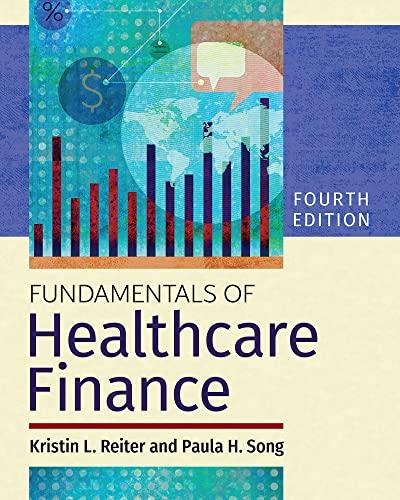Answered step by step
Verified Expert Solution
Question
1 Approved Answer
Reading once again the executive summary of the report, Mar a recalled what his father told him several times during the two years he was
Reading once again the executive summary of the report, Mara recalled what his father told him several times during the two years he was working with him: "Don't grow the company for the sake of growing.Invest only when you are confident there is sufficient demand for a new product, and also when you have the financial resources." As far as financial resources, Mara felt the timing could not be better. Due to strong sales and profitability in the last few years, Sidral Mundet Sol had accumulated a sizable amount of cash. With solid financial performance and steady cash flows, his banker had agreed to extend him a fiveycar, annual interest term loan to launch Sangria Topochico. In the proposal, Francisco Javier estimated that with of the needed capital borrowed, the debtcquity structure would result in an weighted average cost of capital for this project.The bigger question lingering in Maria's mind was whether there would be sufficient demand for this new, zerocalorie product line. Even though the demand for lowcalorie sodas had increased in Mexico, they seemed to be consumed mainly by the middletoupper income segment of the population. The majority of the lowerincome people still consumed only the regular, highsugared carbonated soft drinks.It wasn't clear whether this was because the lowincome group lacked the awareness of the obesity problem, or because there were not too many lowpriced, lowcalorie soda options available. If it were the former, the outlook for lowprice, lowcalorie carbonated soft drinks might not be too promising at this time. If it were the latter, it might be the perfect timing for Sidral Mundet Sol to introduce Sangria Topochico.Francisco hired a consultant to do a market study right after Maria discussed the idea of Sangria Topochico with him. The consultant estimated that the company could sell a total of liters of these zerocalorie carbonates a month, at a projected price of five pesos a liter. This volume of sales was expected for a period of five years at the same price. The market study took about two months to complete and cost the company five million pesos, which Francisco had paid shortly after its completion.Since the existing bottling plant was running at capacity producing regular sodas, the proposal called for a fleet of new, semiautomated bottling and kegging machines designed for long, highquality runs. The total cost of these machines, including installation, was estimated to be million pesos. This machine falls into a year MACRS asset and could be sold at million pesos after the project is done.Francisco believed that the purchase of these machines would enable Sidral Mundet Sol to reduce its cost of labor and therefore the price to the customers, putting the firm in a more competitive position. With proper maintenance, these machines could produce at least liters of carbonated drinks per month.Francisco also estimated that these machines would have a resale value of four million pesos in five years time, if the company were to either shut down the production of Sangria Topochico, or replace these machines with fully automated ones at that time.The new machines would be housed in an unoccupied annex by the main production facility of Sidral Mundet Sol. The annex was also large enough to store the finished products before they were shipped out to grocery stores. Maria's father built the annex years ago when he planned to venture into the mineral water business. He died before he could execute his plan. The annex had been vacant ever since, even though Maria recently received an offer to lease out the space for pesos a year.Francisco determined that additional working capital was needed to ensure smooth production and sales of this new product line. He proposed keeping raw materials inventory at a level equal to one month of production. To encourage the independent grocery stores to carry the new product line, he proposed offering a longer collection period, letting the grocers pay in days, instead of the normal days.As far as accounts payable, he would follow the company's normal policy, and settle the accounts in days.The increased new working capital is fully recoverable at the end of the project.The proposal also outlined the various estimates of production and overhead costs, and selling expenses.Raw materials needed to produce the sodas were estimated to be pesos per liter, while labor costs and energy costs per month were estimated to be pesos and pesos, respectively. The incremental general administrative and selling expenses were quite modest, estimated to be a year, as the new product could be sold by Sidral Mundet Sol's current sales force and via existing distribution channels. The accounting department typically charged of sales as overhead costs for any new projects.Glancing back at his notes, Mara started pondering. The market study seemed to indicate sufficient demand for the new product line. What he really feared was that the new zerocalorie carbonates might erode the sales of his existing productsthe regular sodas. The market study suggested that potential erosion could cost the firm as much as pesos of aftertax cash flows per year. At the new tax rate of for both income and capital gains, could he add value to the firm by taking on this project? Calculate the following cash flows:Initial Cash OutflowIncremental Cash FlowTerminal Year Incremental Cash FlowConsider that asset falls into a year MACRS asset.
Step by Step Solution
There are 3 Steps involved in it
Step: 1

Get Instant Access to Expert-Tailored Solutions
See step-by-step solutions with expert insights and AI powered tools for academic success
Step: 2

Step: 3

Ace Your Homework with AI
Get the answers you need in no time with our AI-driven, step-by-step assistance
Get Started


